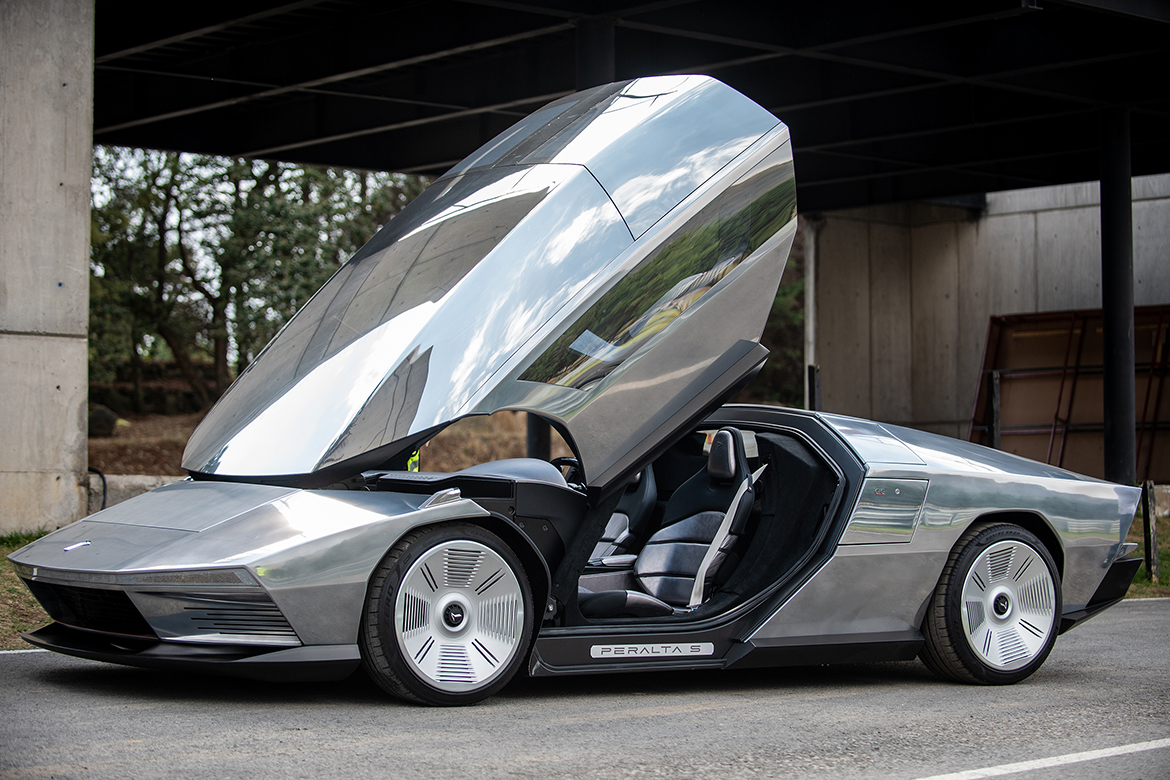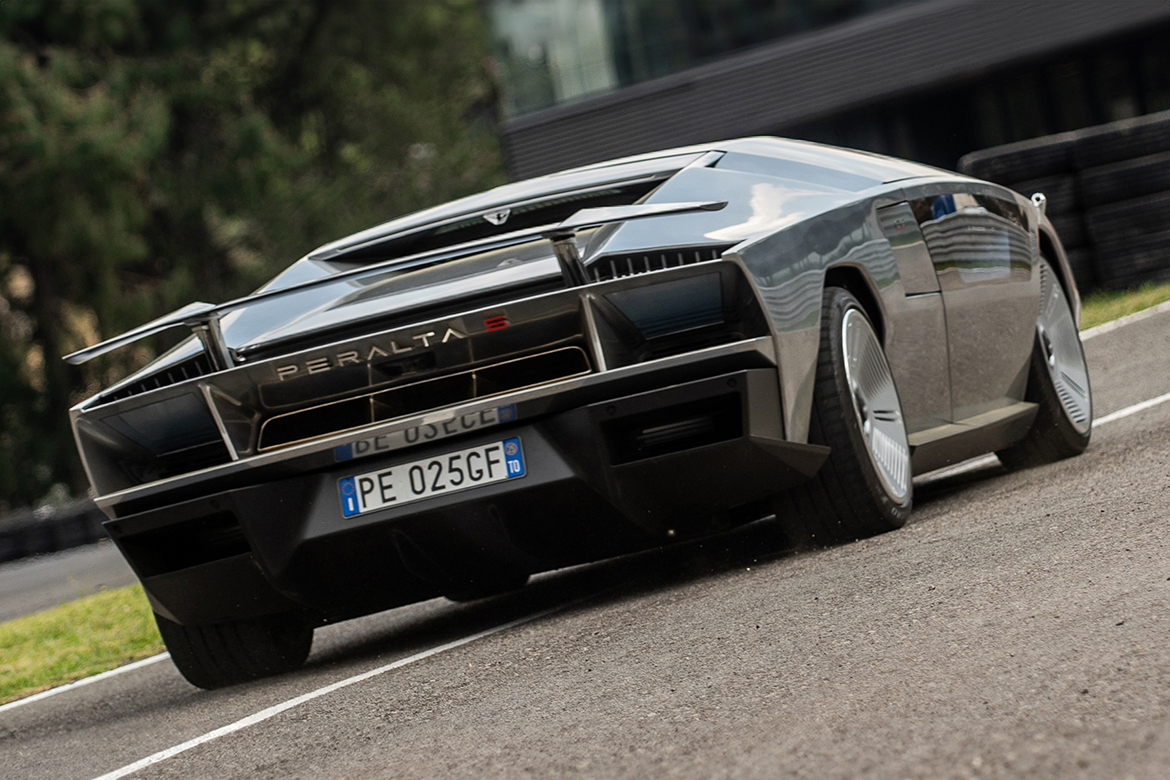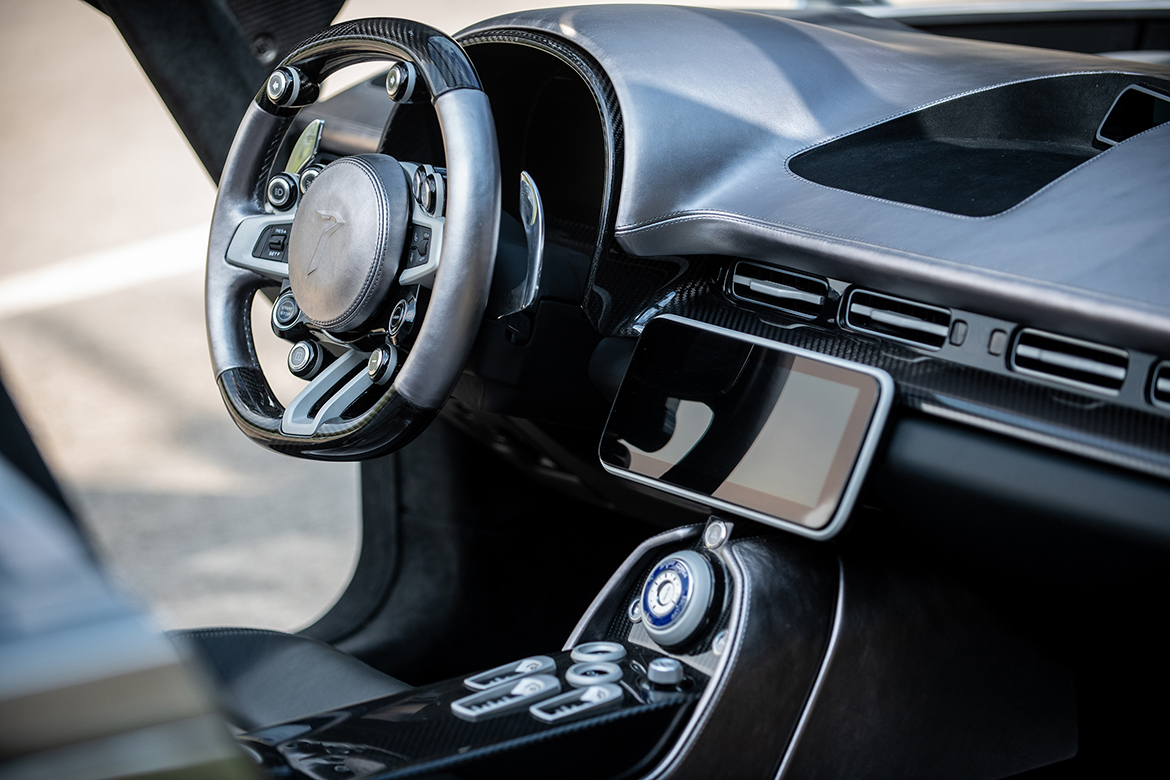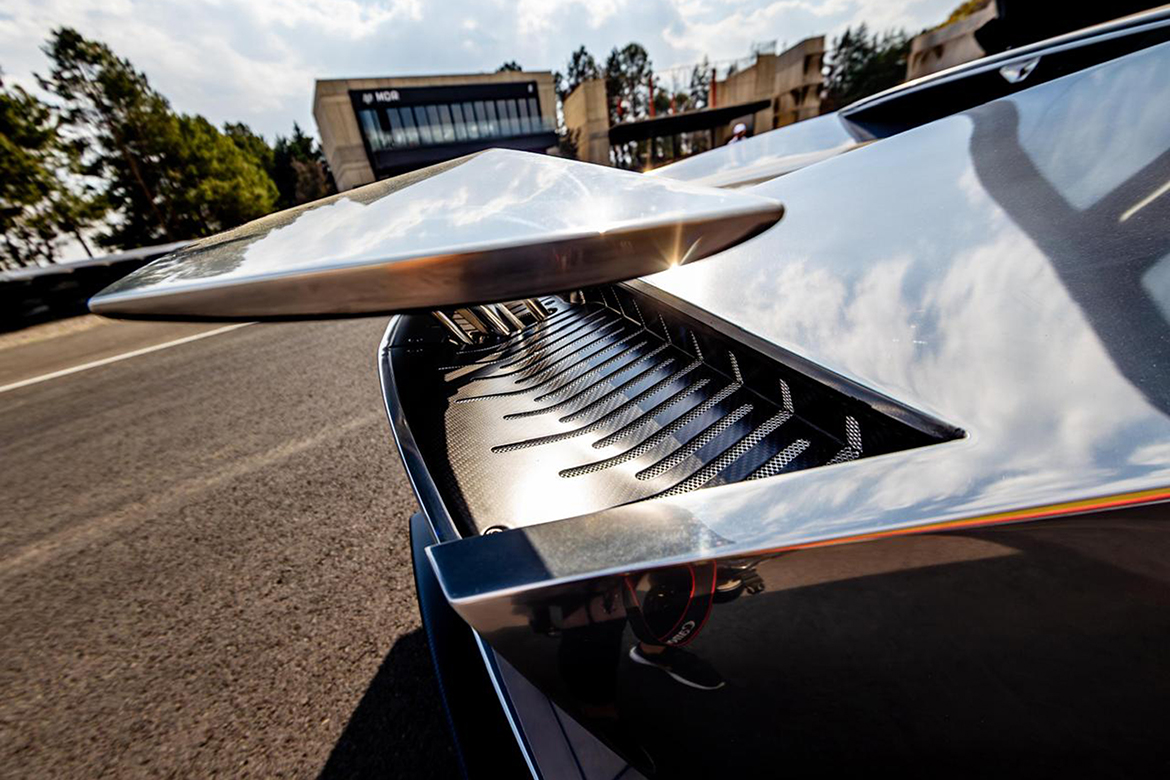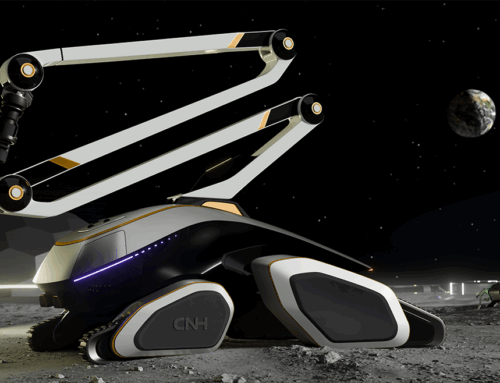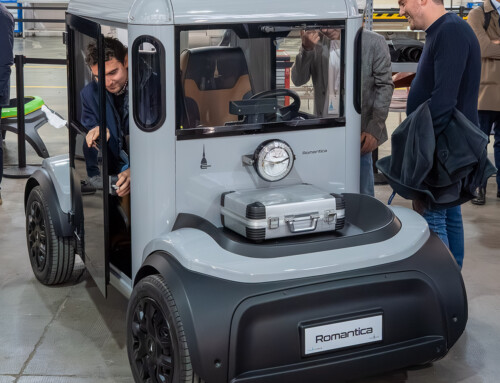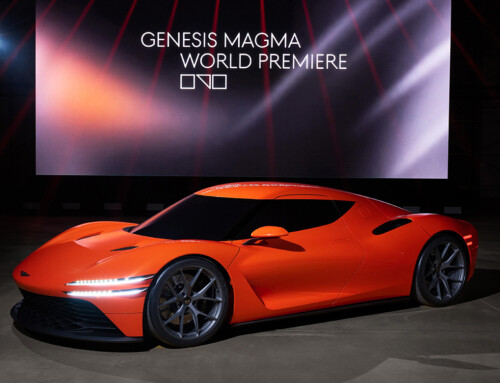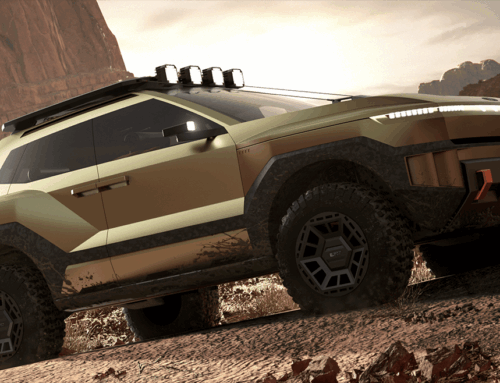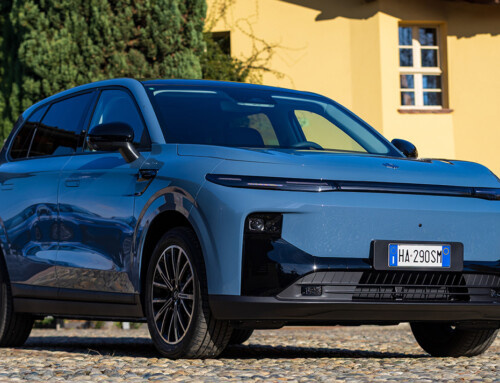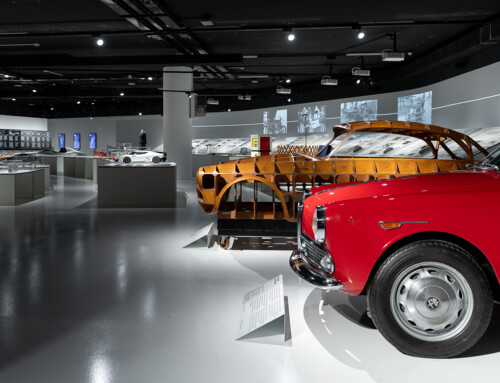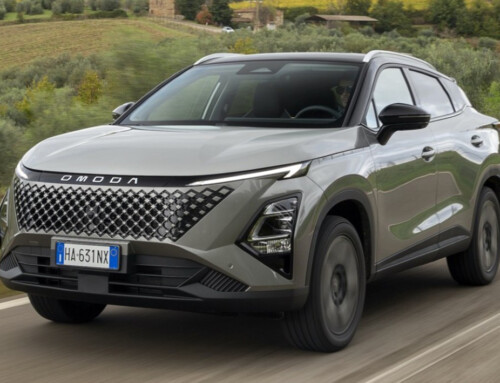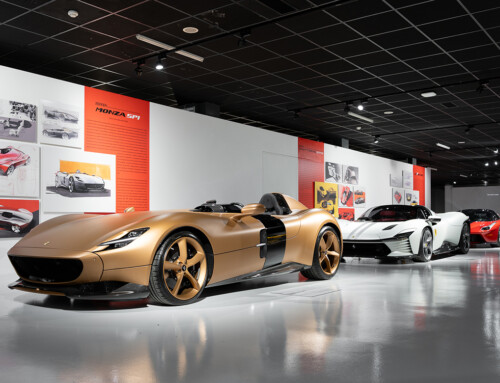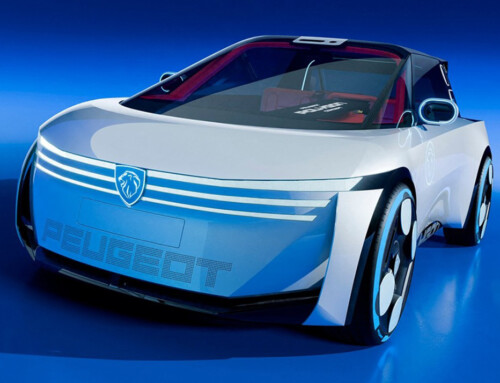The Peralta S, the first one-off created by GFG Style, was presented at the Pastejé Automotive Invitational, a Mexican automotive event. Inspired by Giorgetto Giugiaro’s 1971 Maserati Boomerang, the sports car was designed by Fabrizio Giugiaro and developed by GFG Style’s style centre, commissioned by Mexican car collector Carlos Peralta and his sons Juan Carlos and Nicolas. ‘The Peralta S has a typical 1970s attitude and has nothing to do with today’s cars. I wanted to embellish it with citations, styling cues and references to shapes from a past that made history, but it is also a tribute to my father, through a modern reinterpretation of the volumes of the Boomerang,’ said Fabrizio Giugiaro.
The side view is characterised by a silhouette with a single uninterrupted line: nose, roof, tail with only two edges. Even from above, the surfaces are flat and continuous. A single shape that presents itself as if it were a great monolith. All emphasised by the choice of leaving the polished aluminium exposed. In plan, it is teardrop-shaped with closure at the rear, the front end is simple: all the lights are enclosed and concealed in the nose and rear. The only non-aluminium parts are the front spoiler, rear diffuser and side sills, all made of exposed carbon fibre. The rear is characterised by the integrated spoiler that lifts up and the lights that are concealed underneath: when switched on, they create an interesting ‘shadow light’ effect.
Note the absence of traditional doors: the opening, which allows access to the passenger compartment, is achieved by lifting a single ‘dome’. However, the side windows can be opened independently by means of a gull-wing movement. It should be noted that there are no traditional doors: they are opened by raising a single dome to allow access to the passenger compartment. However, the side windows can be opened independently by means of a gull-wing movement. The interior is also inspired by the innovative materials of the 1970s. Leather, also with a metallic chrome effect, covers the seats, dashboard and panels. Special care was taken in the design of the interior elements with functional shapes: for example, car controls integrated into the steering wheel, ergonomic, wrap-around seats and a centre console with innovative solutions.

